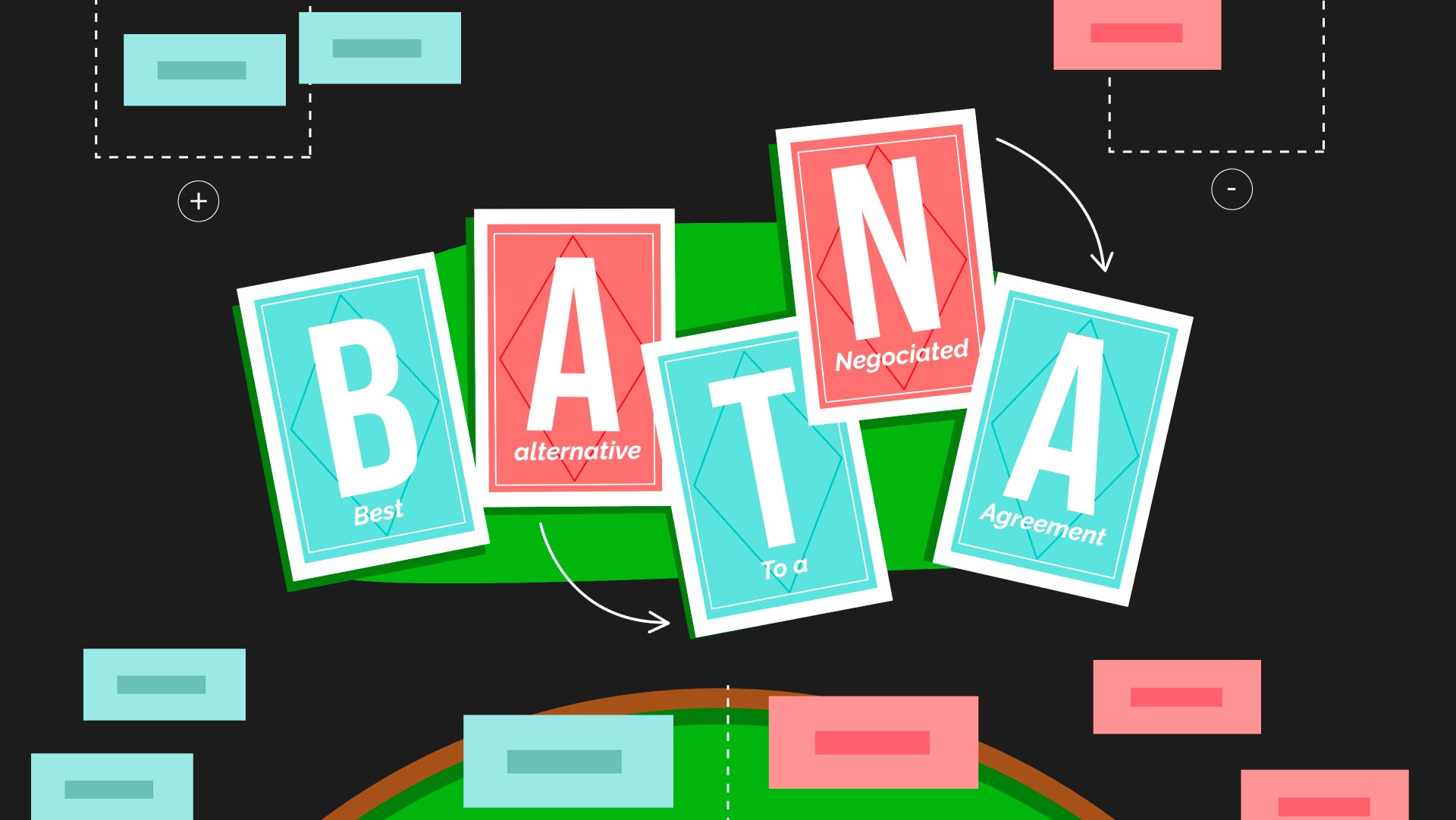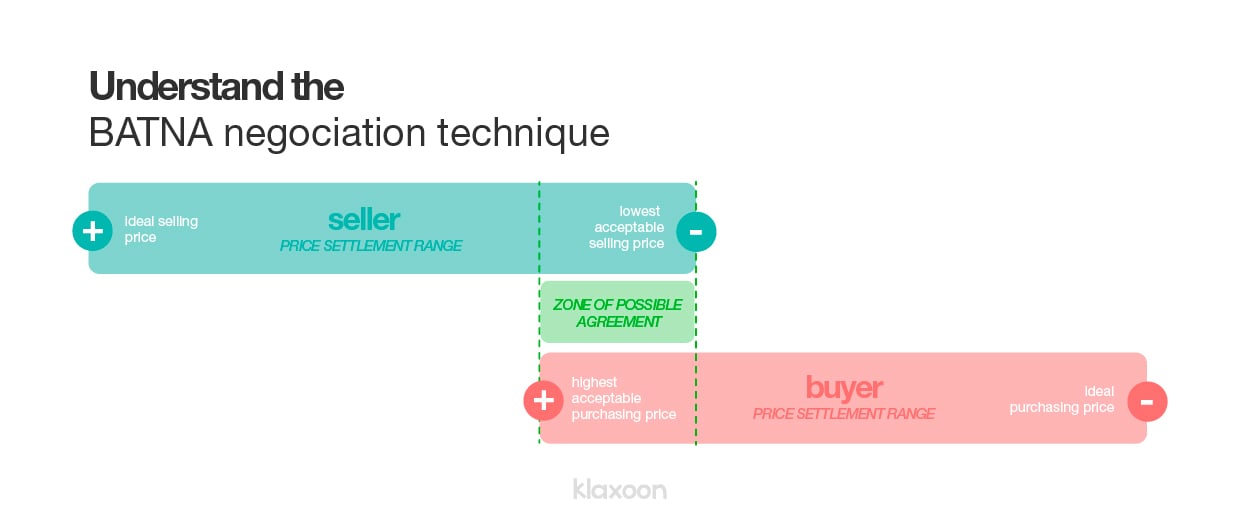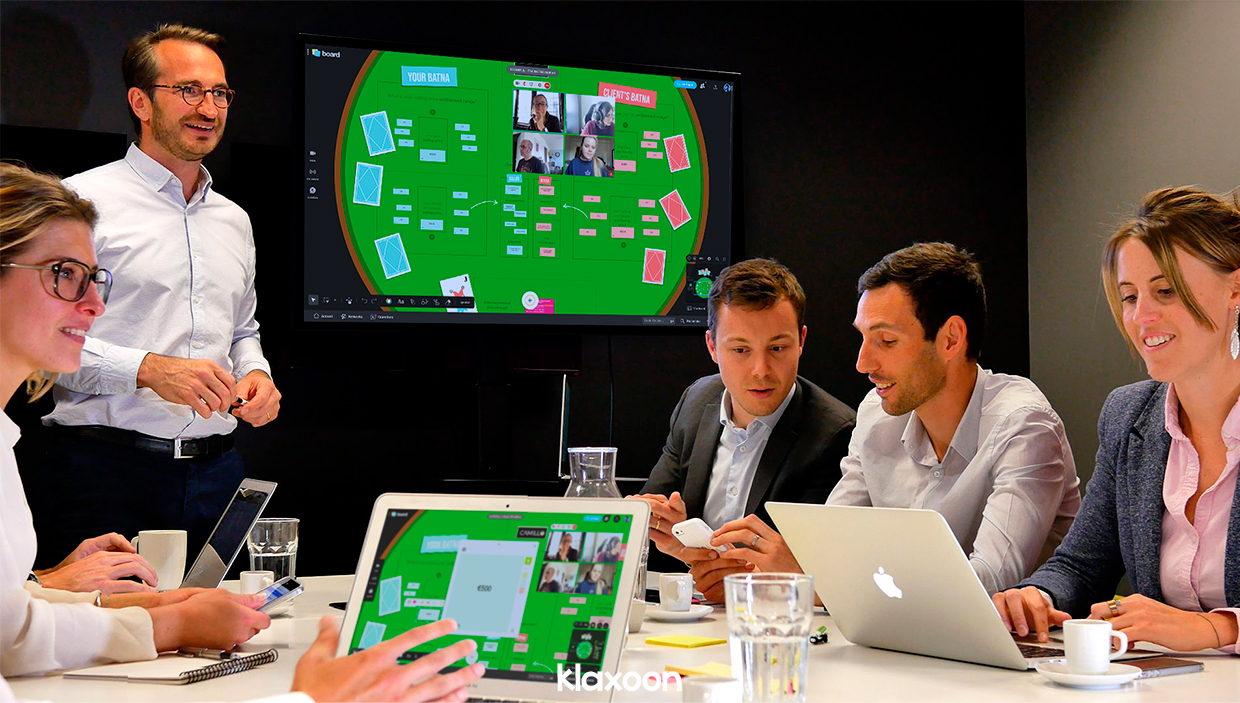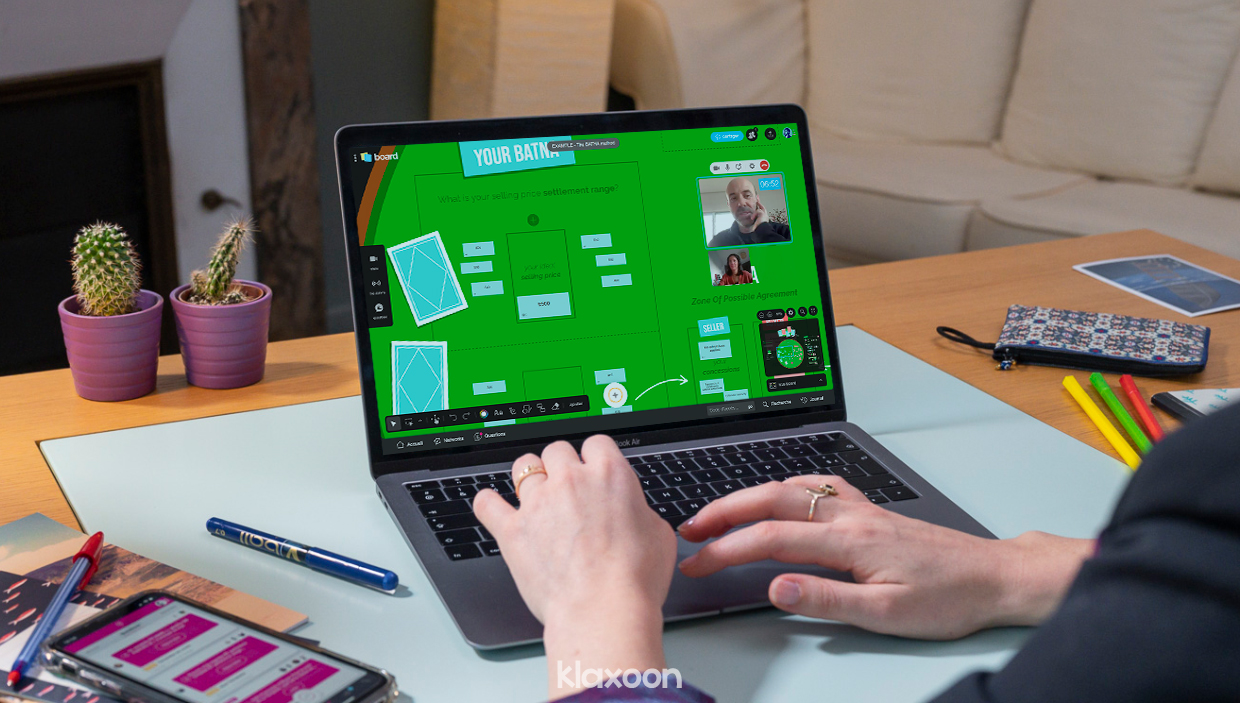BATNA: The negotiation technique for successful agreements
Published on February 14, 2025
BATNA: The negotiation technique for successful agreements


Before entering into sales talks, use the BATNA template to prepare yourselves as a team to face whatever may come up and conclude a successful negotiation. This is a ready-to-use template for a team due to hold a sales meeting with a client or lead. During negotiations, you only have a few seconds to think before finalizing an agreement that may last for years. Don’t let yourself get dragged into an unfavorable agreement anymore! Take the time out with your team to agree on the settlement range that you are willing to accept when reaching an agreement with your client.
No, BATNA is definitely not Batman and Krishna’s secret love child. In fact, it stands for “Best Alternative to a Negotiated Agreement”. The BATNA method was popularized in the early 80s by its inventors, Roger Fisher and William Ury, who taught the art of negotiating at Harvard University. It helps anticipate a reasonable last resort fallback solution, in case negotiations don’t go as planned. The fallback should allow you to reach a favorable agreement. So BATNA is the last position that the seller is willing to accept to conclude a satisfactory agreement.
To understand how to prepare your best fallback solution, look at the following image.


Outline of the BATNA negotiation technique.
To prepare your BATNA, follow these easy steps:
In short, it’s vital to draw up your BATNA before a negotiation, so you optimize your chances of success.
The only way to conduct successful sales talks is to have a solid base to fall back on when it comes to the critical point in a business agreement. That means having multiple business proposals ready before the meeting, along with the approval of your team! The BATNA is meant for any team dealing with a client or sales lead.


With Board, the entire team can help to draw up the BATNA, the best fallback solution, before a negotiation.
The aim of the BATNA is to help realize when the business agreement stops being beneficial for the seller. When drawing up your BATNA, examine all the gray areas relating to this particular client as a team, so you will avoid getting caught off guard during the sales talks. This prior preparation will offer you reference points during the negotiation, and knowing where you stand during the meeting will facilitate your decision-making process.
Planning out your BATNA as a team will increase your confidence. You will come across as more assertive during the sales negotiation, and will spare yourself two setbacks:
Remember: it’s always better not to sign an agreement than to sign one that is unsatisfactory, and may even turn out to be a disaster in the long run!
With Klaxoon’s Board, the digital interactive whiteboard, enjoy a communication space that can be easily accessed by all your team members, wherever they may be. Even when working remotely, the integrated video conferencing feature allows you to engage in real-time exchanges. And with Board’s specially designed BATNA template, all the conditions are met to effectively set up your future negotiations!
The template allows you to discuss the best solution, i.e. your best price and your reserve price, as a team. With Question, Klaxoon’s tool for feedback and efficient decision making, you can easily receive immediate comments from your team, and choose the best options.
By feeding in your ideas, terms and possible concessions, you can see your BATNA being charted out right before your eyes in a few clicks. This way, you can second guess the arguments that your client is going to use and plan yours so you are ready for whatever comes up.


Overview of the BATNA Board of a sales team preparing for a negotiation.
Using your collective intelligence, define the best selling price to be achieved during the negotiation. First, each person individually suggests the price that they consider ideal and explains their point of view to the rest of the group. Then, the members of the group “like” the most convincing proposal, using the “like” button. In the case of a drawing, launch a Question so the decision can be taken during a vote.
Do the same to determine your minimum acceptable selling price or reserve price.
Put yourself in the buyer’s shoes and proceed as before to estimate:
In addition to this process, you can use the SONCASE method to identify as a team your sales lead or client’s buying motives. This prior preparation will help you estimate as accurately as possible the purchasing price settlement range and anticipate their arguments.
By determining your minimum acceptable selling price and the client’s or lead’s maximum acceptable purchasing price, you have identified the limits of the Zone Of Possible Agreement (ZOPA) or “bargaining range”.
Within this range, imagine all the solutions where both negotiating parties might find a common ground. First, think of the demands that your client or lead is likely to put forward. Every member of the team can add their ideas to the dedicated space.
Once all the ideas are set out, everyone “likes” the suggestion that they consider most relevant. Then, do the same with the concessions that you might find acceptable and highlight the best ones, again using the “like” button. This will help increase your negotiating power!
Finally, list the terms that you might want to put forward. And think of the concessions your client or prospect could make.
Once outside the ZOPA, the seller and buyer come into conflict and cannot find a common ground. Despite a well-prepared negotiation, a meeting may not always result in an agreement. So think of an amicable outcome, in view of possible future cooperation.
Decide on the best option as a team, using the multiple-choice Poll Question.
Now you have all the cards up your sleeve for a successful negotiation, from your ideal price to your best fallback solution!
Get inspired by other templates from the same categories
Unlock your teamwork potential